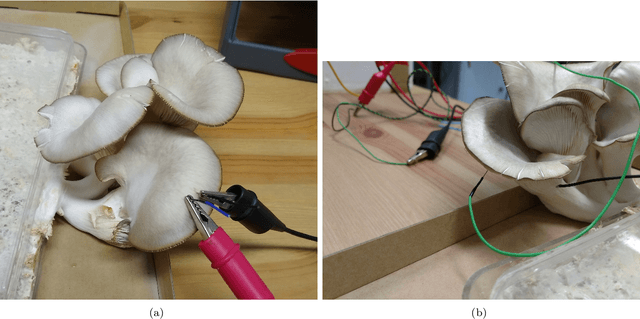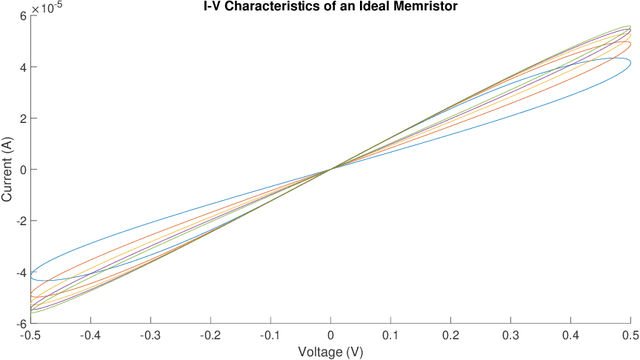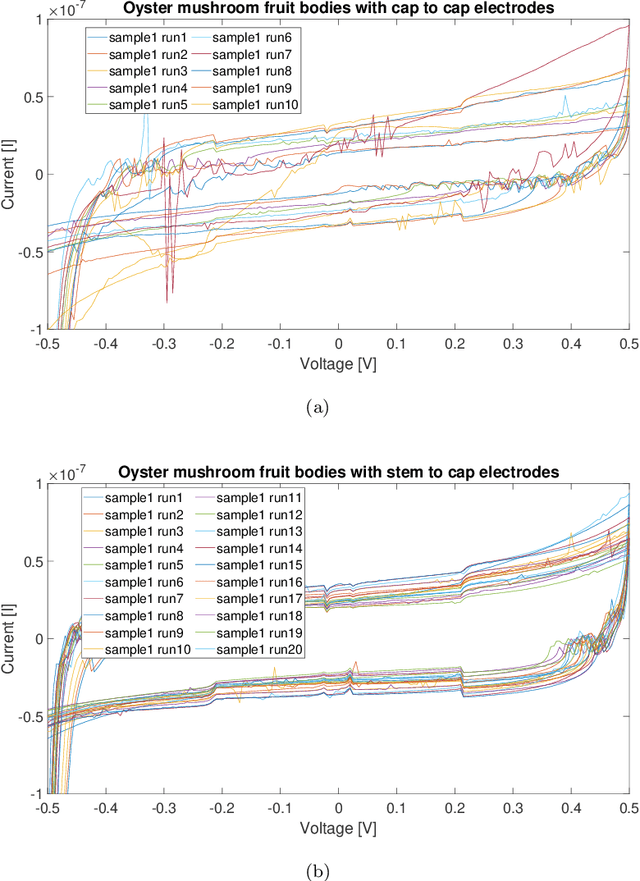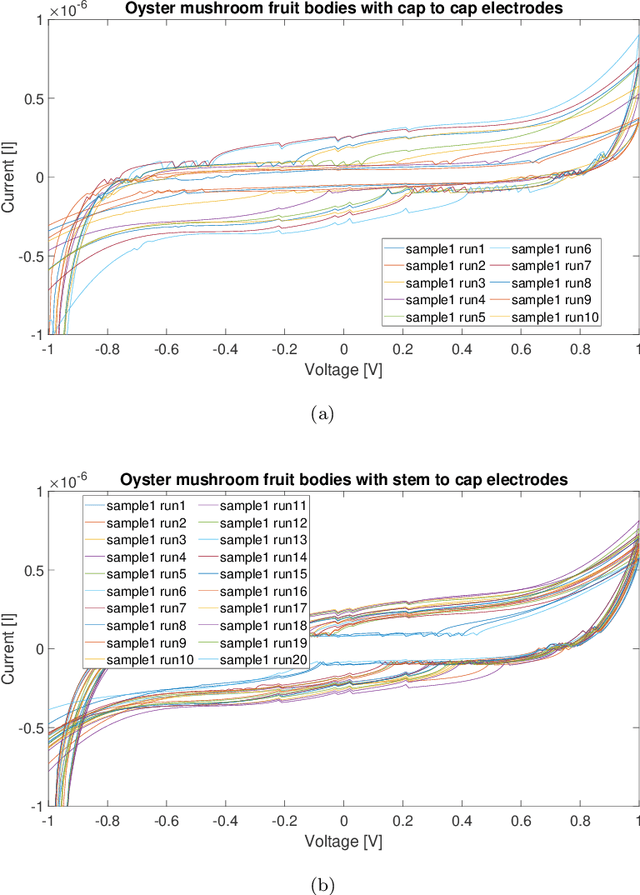Alexander E. Beasley
Memristive Properties of Mushrooms
Feb 15, 2020



Abstract:Memristors close the loop for I-V characteristics of the traditional, passive, semi-conductor devices. Originally proposed in 1971, the hunt for the memristor has been going ever since. The key feature of a memristor is that its current resitance is a function of its previous resistance. As such, the behaviour of the device is influenced by changing the way in which potential is applied across it. Ultimately, information can be encoded on memristors. Biological substrates have already been shown to exhibit some memristive properties. However, many memristive devices are yet to be found. Here we show that the fruit bodies of grey oyster fungi Pleurotus ostreatus exhibit memristive behaviours. This paper presents the I-V characteristics of the mushrooms. By examination of the conducted current for a given voltage applied as a function of the previous voltage, it is shown that the mushroom is a memristor. Our results demonstrate that nature continues to provide specimens that hold these unique and valuable electrical characteristics and which have the potential to advance the field of hybrid electronic systems.
 Add to Chrome
Add to Chrome Add to Firefox
Add to Firefox Add to Edge
Add to Edge